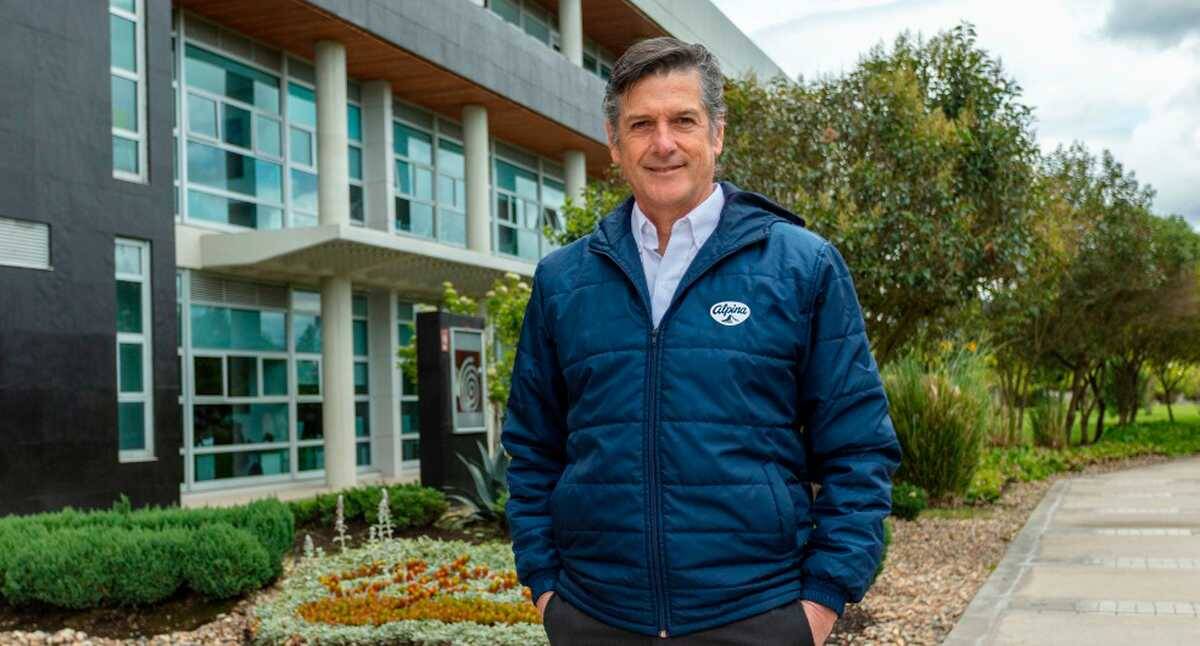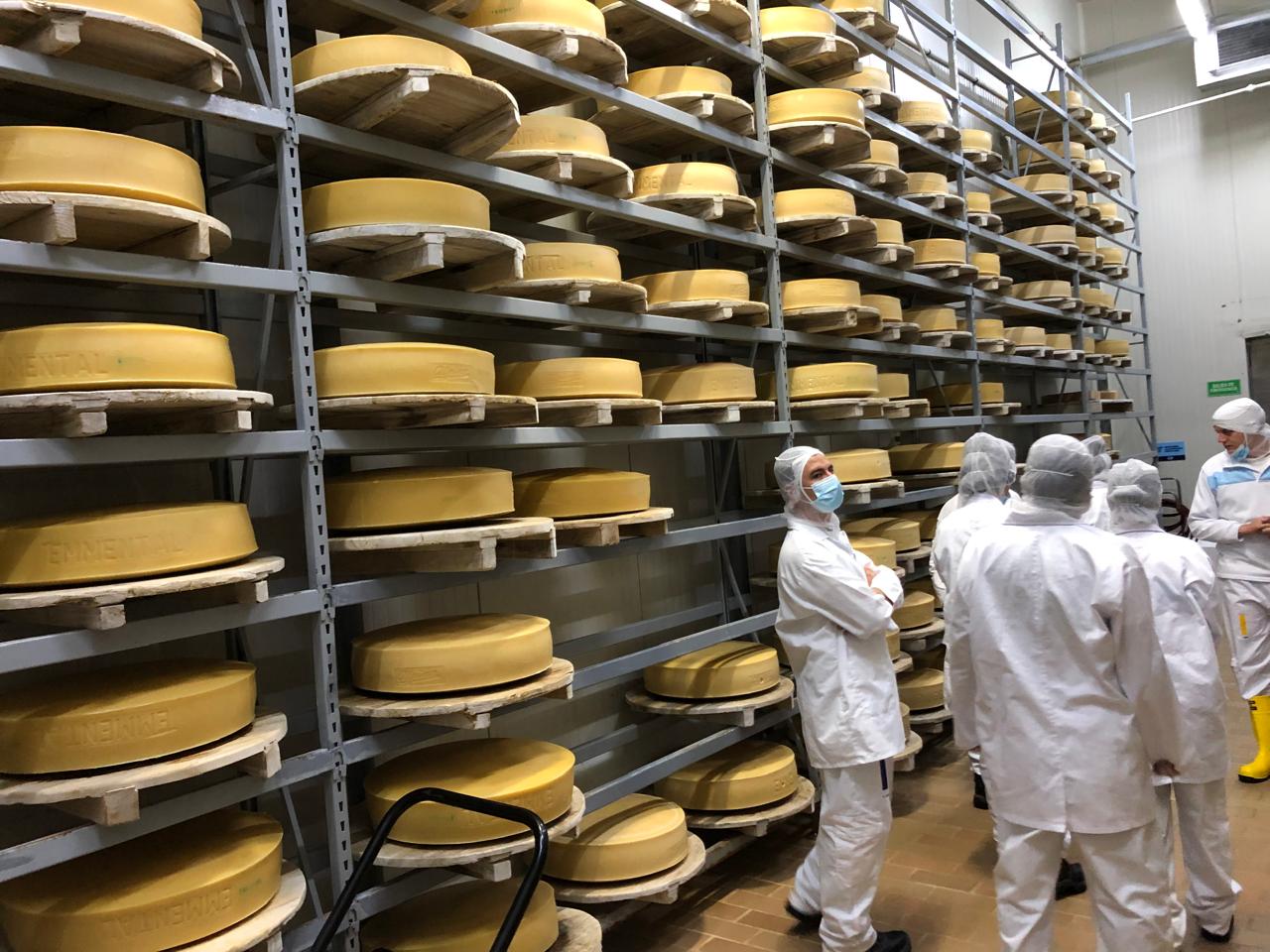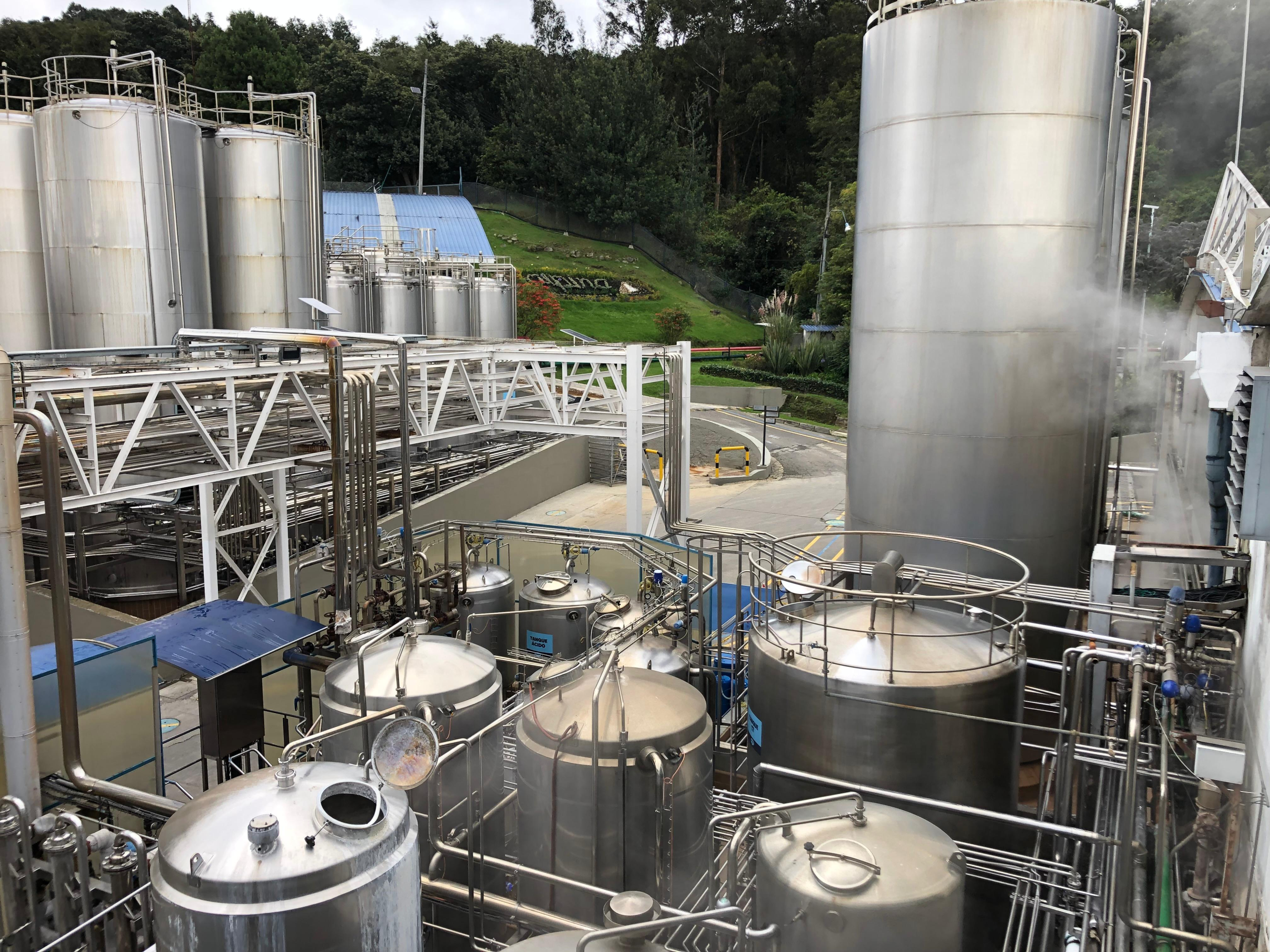G. Alpina seeks greater presence in the U.S., including Canada: interview with Ernesto Fajardo, its president

Amid slow economic growth, high interest rates, and a gradual decline in inflation, the Alpina Group achieved a strong first half of the year. Sales grew by 7.5 percent and EBITDA by 15.3 percent to €228 billion, according to the preliminary balance sheet of the organization, which includes eight companies, a research center, and a foundation and which this year marks its seventh anniversary.
The goal is to continue growing, says its president, Ernesto Fajardo, who emphasizes that with a portfolio of more than 60 brands, exports to 15 countries, and a presence in four economies (Colombia, Venezuela, Ecuador, and the United States), the task of continuing to innovate, develop new products, and generate well-being for consumers continues. Therefore, the idea of expanding its operations is among the organization's plans, about which he provided EL TIEMPO with some details.
How did the Alpina Group fare in the first half of 2025? When you look at the overall picture, taking into account that each of the countries where we operate (Colombia, Ecuador, Venezuela, and the United States) and each business (eight companies, a research center, and a foundation) has its own challenges, I believe we managed to close out a strong first half of the year, which helps us navigate the current complexity in terms of our balance sheet and portfolio.
And what do the numbers in that balance sheet show? In Colombia, we're doing well in some ways, to be honest. We must admit that 2024 was quite difficult, with consumption significantly impacted, and what we're seeing now is a recovery in demand, significant growth in the traditional channel, and a team working hand in hand with our partners and ranchers. This has allowed sales to grow at an annual rate of 7.5 percent in the first half (1.8 trillion pesos) and business profitability to also be positive; EBITDA grew 15.3 percent (228.00 million), while the margin grew by 12.2 percent. I'd say these have been a very good first six months, with all businesses growing, reflecting that the group's strategy in terms of diversification and having value-added companies is working quite well.

Ernesto Fajardo, president of Grupo Alpina, explained their plans for the second half of the year. Photo: Courtesy of Alpina
We have plants in Colombia, Venezuela, Ecuador, and the United States, but we also export to more than 15 countries. Today, our exposure to the dollar is much higher; in the latter country alone, our sales volume exceeds $270 million annually, while in Ecuador it's around $65 million.
In the United States (California), we have a company with over 100 years of tradition, whose Clover Sonoma brand is a leader in the northern part of that state, which has over 10 million inhabitants; today we own 70 percent of that company. There, we produce mostly highly specialized organic milk, which is purchased from farmers in that region. This has allowed us to begin expanding into Southern California, where we see great potential. Clover's results for the year are up 6 percent.
What potential are you seeing there? Southern California has a market of about 30 million people, larger than the north, so we're expanding our portfolio there with more butters, creams, high-protein yogurts, and Greek yogurts, improving margins and growing profits by over 40 percent. Clover is also a company deeply connected to sustainability issues, where we work hand in hand with an NGO to improve the ecosystems where we operate, where consumers are very demanding when it comes to food, innovation, the environment, and sustainability.
How are you seeing the second half of 2025? We must consider the different conditions in each market, but in general, we are very optimistic that we will maintain the performance observed in the first half of the year, considering that interest rates remain high and inflation is not falling at the desired pace. We are confident that with the projected growth, which is not what we expect, demand will be maintained, as we have plans for new launches in all of our businesses and adjustments in others, such as Boydorr, which is more focused on the healthcare sector. We hope to launch businesses by the end of the year that will continue to strengthen them for the future.

Cheese ripening process at the Alpina plant in the municipality of Sopó (Cundinamarca). Photo: Carlos Arturo García M.
Yes, nutrition is something we're focusing on. We created a scientific division to work on this segment. We have the Latin American Nutrition Center and the Alpina Institute, both certified entities in Category A, the first in Category C, and the second in Category C. We have staff working on how we project the entire nutrition issue from a preventive perspective. Although Alpina is a company that has been involved in this area, we are developing more functional products for people and their lifestyles. We believe we have very interesting growth potential in all the countries where we operate and with the companies and products we have. This will allow us to continue developing a relevant value offering and have the confidence that we face interesting growth opportunities.
How much do you invest in this topic given its relevance? In general, we have an investment budget for 2025 of approximately 108 billion pesos in total, but I would say that around 40 or 50 percent of this is related to nutrition, whether in the capacities of new or existing products, but with different capacities, that meet certain parameters from a nutritional perspective. Now, this value is not fixed; it depends greatly on acquisitions and other aspects, but every year we have made some investment related to purchases. In fact, we are currently participating in a project with Rockstar, an accelerator with which we opened a chapter to explore agriculture and food initiatives with technology, inviting entrepreneurs to participate in investments to bring these businesses forward. Last year we did one, and today we have seven entrepreneurs working with us, for example. We invested $2 million in that initiative. We already have more than 250 venture capital firms from across Latin America interested in participating, and we'll select eight or nine of them to work with over the next 20 days to reach consumers in a unique way across several aspects.
It means that as long as they find companies that meet those requirements, they would be willing to buy them... What we've decided is that, in principle, we'll invest in the development stage, and the reason for entering agriculture and technology is because that's an area where there's less investment in countries like ours. As these initiatives advance, the idea is to continue being an investor who supports entrepreneurs, but where we see the possibility of going bigger or utilizing some of our capabilities, we'll perhaps invest more and have a higher stake.
The Alpina Group is active in many sectors. Where else would you like to be? I think we're moving into snacks, specialty products, and functional products, where we're always seeking to improve the quality of all products and expand our offerings for all consumers. This requires a greater capacity for innovation and significant logistics to bring these products to all markets. Outside of this, I think the opportunity lies in well-being, where people's greatest concern lies today. We're also moving toward neutraceuticals, which are food products that offer health benefits beyond their basic nutritional value, which is where the acquisition of Boydorr two years ago fits in. We have very high projections and expectations for the future in this area.

Alpina plant in Sopó, Cundinamarca, where the company was founded 80 years ago. Photo: Carlos Arturo García M.
Today, we're focused on the United States, where we see a significant opportunity for expansion. The California market is very large, and we still have a relatively limited product offering compared to Colombia or Ecuador. Therefore, we believe there's growth potential there, both through the organic products we're able to develop and through acquisitions in some of those regions.
And are you looking at some options? These opportunities, in terms of acquisitions, sometimes don't necessarily present themselves when you're looking for them, but rather when they appear, so it's important to be prepared. We currently export to 15 countries, including Central America and Canada, and through these countries, opportunities often arise that open the door to reaching and becoming local players. We're evaluating that.
We're also expanding into Europe with exports, but we have some work there with partners with whom we manufacture some of our products locally. All of these platforms help us grow, but they also help us understand those markets, and through that knowledge, potential acquisitions emerge.
eltiempo





